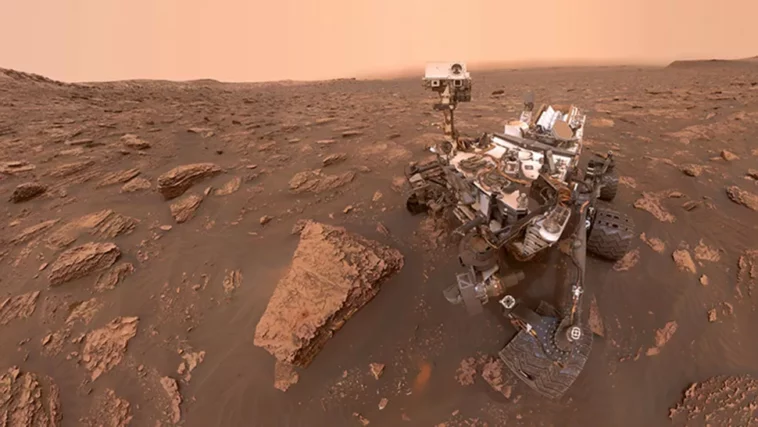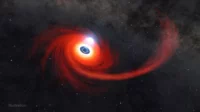There may have been no oxygen in the atmosphere of ancient Mars after all, a new study has found — but don’t despair, there still could have been living creatures crawling on the planet’s surface.
When NASA’s Curiosity rover found manganese oxide in Martian rocks in 2016, many planetary scientists rejoiced, believing that the mineral’s presence was a significant hint of past concentrations of oxygen in the planet’s atmosphere. The odds of past existence of life on Mars suddenly seemed higher, too, as oxygen is one of the key enablers of life on Earth.
A new study based on laboratory experiments, however, has now concluded that not only were high concentrations of oxygen not necessary for the formation of the minerals, but that the expected composition of ancient Mars’ atmosphere would have prevented oxygen-reliant reactions in the first place. Instead, the scientists said, copious amounts of manganese oxide could have formed on Mars simply in the presence of halogen elements, such as chlorine and bromine, which are found on the Red Planet in greater quantities than on Earth.
“Oxidation does not necessitate the involvement of oxygen by definition,” Kaushik Mitra, now a planetary geochemist at Stony Brook University in New York who led this study as part of his graduate research work at Washington University in St. Louis, said in a statement(opens in new tab).
Oxidation is a chemical reaction in which a molecule or atom loses electrons. The reaction doesn’t necessarily involve oxygen, but in many cases leads to the formation of oxides, such as manganese oxide found on Mars.
“Earlier, we proposed viable oxidants on Mars, other than oxygen or via UV [ultraviolet] photooxidation, that help explain why the Red Planet is red,” he said. “In the case of manganese, we just did not have a viable alternative to oxygen that could explain manganese oxides until now.”
Kaushik and his collaborators were inspired by observations of reactions occuring during chlorination of drinking water, which involves adding molecules containing chlorine into water to kill microorganisms through oxidation. The researchers decided to test whether oxidation could be occurring in the halogen-rich environment on Mars. In a laboratory, they created water samples with a composition similar to what might have been found on ancient Mars. When they submerged fragments of manganese minerals in the water, the scientists discovered that the manganese quickly dissolved, forming manganese oxide thousands to millions of times faster than in the presence of oxygen, the researchers said in the statement.
The key to this stunning rate of oxidation, the scientists determined, was that the water contained chlorate and bromate, forms of the halogens chlorine and bromine that are common on Mars. Bromate was particularly efficient in turning manganese into manganese oxides, enabling the reaction to proceed at a speedy pace. That held true even when the water samples had high concentrations of carbon dioxide, which prohibited the formation of manganese oxides in the presence of only oxygen.
This finding is key to disproving the theory about past abundance of oxygen in the atmosphere of Mars that emerged after Curiosity’s discovery. Scientists also believe that the atmosphere of ancient Mars was rich in carbon dioxide, so because carbon dioxide blocked the reactions with oxygen, the idea that the formation of manganese oxides required high concentrations of atmospheric oxygen appeared to no longer hold water.
“The link between manganese oxides and oxygen suffers from an array of fundamental geochemical problems,” Jeffrey Catalano, a geochemist at Washington University, St, Louis, and corresponding author of the study, said in the statement. “Halogens occur on Mars in forms different from on the Earth, and in much larger amounts, and we guessed that they would be important to the fate of manganese.”
The scientists, however, stress that although oxygen may not have been present in Mars’ ancient atmosphere after all, the planet still could have teemed with microscopic life forms in the past.
“There are several life forms even on Earth that do not require oxygen to survive,” Mitra said. “I don’t think of it as a ‘setback’ to habitability — only that there was probably no oxygen-based lifeforms.”




GIPHY App Key not set. Please check settings